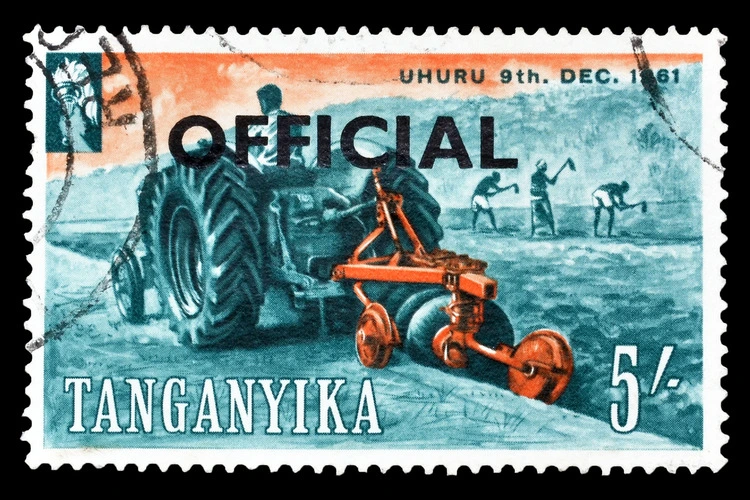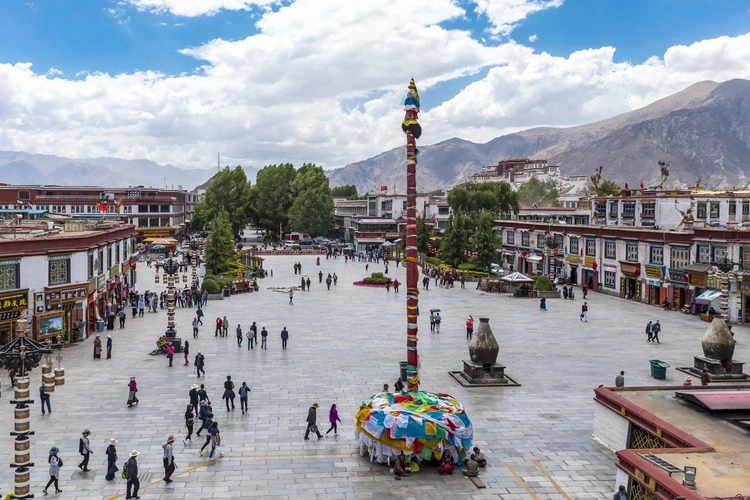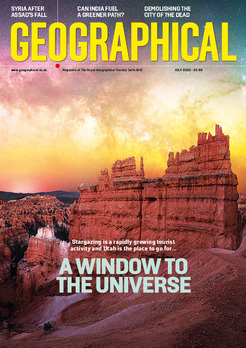
Find out more about the history of 10 countries across the world that no longer exist, and exactly why they vanished from the map
By
While borders may seem clearly defined on a map, the reality is far more dynamic and complex. Throughout history, countries have shifted their borders, merged with other nations or in some cases, disappeared entirely.
From the most influential of empires to micro-nations just several kilometres long, read on to explore more about ten territories that no longer exist and why exactly their existence came to an end:
1) Prussia

A historical region and eventual kingdom within Europe, Prussia was located in today’s Germany and Poland. It began as a German state back in 1525 and was a major player in European affairs until Germany united under its leadership in the 19th century.
The original Prussians were closely related to Latvians and Lithuanians, and were conquered and made to adopt the Christian religion in the 13th century. Eventually, in 1701, the region was officially coined the Kingdom of Prussia under the German Hohenzollern family.
Enjoying this article? Check out our related reads:
In 1934, Germany ceased to use the name Prussia to describe the area, and after losing territory and power during World War One and World War Two, Prussia was formally abolished in 1947 by the Allies.
2) Yugoslavia

Located in the west-central part of the Balkan Peninsula, Yugoslavia was a former country that existed from 1929 until 2003, and was one of the largest in the Balkans. Six republics comprised the country: Bosnia and Herzegovina, Croatia, Macedonia, Montenegro, Serbia and Slovenia.
The country faced intense political and economic crises during the 1980s and 1990s, at the same time as the collapse of communism in Eastern Europe. As certain political parties advocated for the independence of all republics, while others lobbied for power only for certain ones, tensions grew.
By 1991, Slovenia and Croatia had blamed Serbia for dominating the Yugoslavian government, finances and military, and Serbia accused the other two of separatism.
Eventually, Slovenia became the first country to leave in 1991, followed by Macedonia and Bosnia and Herzegovina by 1992. By 2003 – with just Serbia and Montenegro remaining – the country was renamed the State Union of Serbia and Montenegro, but in 2006 both countries eventually declared their independence.
3) Tanganyika

Tanganyika was an eastern African state settled as early as the 10th century and existed up until 1964, when it merged with Zanzibar to form the United Republic of Tanganyika and Zanzibar. Eventually, the two countries split to form Tanzania and Zanzibar.
Tanganyika was first inhabited by Asian and Arabic traders, as well as Bantu-speaking peoples. Over the course of its history, both Germany and Britain colonised the region: first Germany, claiming Tanganyika was part of German East Africa, and then Britain after gaining control of German holdings during World War One.
4) Czechoslovakia
When the Austria-Hungary empire faced collapse back in 1918, several provinces joined together – the historical areas of Bohemia, Moravia and Slovakia – to form what was known as Czechoslovakia. Before World War Two, the country was among the most industrially advanced in Eastern Europe.
Czechoslovakia came under Nazi rule during WWII, and after being freed, found itself under Communist rule until the late 1980s, when the country elected a non-Communist president for the first time in 40 years, Václav Havel.
Such a transition fuelled disagreements in the country, along with opposing views on whether to privatise state-run industries. As a result, Czechoslovakia peacefully dissolved in 1993 into what is now modern-day Czechia and Slovakia.
5) Neutral Moresnet
Coined as a ‘micro-nation’ – measuring just 1.5 kilometres (1 mile) wide and five kilometres (3 miles) long – Neutral Moresnet was created back in 1816 and existed in what is now the modern-day municipality of Kelmis in Belgium.
The land on which Neutral Moresnet stood was prized for its highly profitable and large zinc quarry– used for the production of brass – and was disputed by the Kingdom of the Netherlands (now Belgium) and the Kingdom of Prussia. To come to an agreement, the Congress of Vienna decided to make Neutral Morsenet.
Throughout its existence, the territory’s major employer, the Vieille Montagne mining company, provided residents with jobs as well as housing and healthcare. Many people came to live in Neutral Moresnet due to low taxes and no import tariffs, as well as to avoid conscription to military draft – although all of the territory’s 3,500-strong community were effectively regarded as stateless.
Loopholes, due to no formal legal code being established in the country, meant gambling could occur, as well as no formal compulsory education for children (who instead often worked in the quarry mine).
In 1915, Neutral Moresnet was eventually annexed by Germany.
6) Abyssinia
Founded in the 13th century, the Kingdom of Abyssinia – also known as the Ethiopian Empire – existed until the 20th century. Ruled by Emporer Tewodros II, the Christian kingdom spread its faith through military conquest as well as building churches and monasteries.
The region was situated in the northern highlands of where Ethiopia and Eritrea exist today until 1974, when the last emperor, Haile Selassie, was overthrown.
7) Tibet

Now an autonomous region of China, Tibet’s status has fluctuated throughout history from times of being an independent entity to being ruled by Chinese and Mongolian dynasties. It was originally comprised of three provinces: U-Tsang, Kham and Amdo.
From 1911 until 1951, Tibet existed as an independent state. However, due to the Chinese Communist revolution, Tibet was invaded and consequently forced to give up its independence. An attempted uprising against this back in 1959 led to the political and spiritual leader of the country – the 14th Dalai Lama – to flee into exile in India along with thousands of other Tibetans.
Today, Tibet is still governed by Chinese rule.
8) Austria-Hungary

Sprawling across more than 600,000 square miles in central Europe, Austria-Hungary – also known as the Austro-Hungarian Empire – existed from 1867 to 1918 and was a major powerhouse before World War One. So pivotal was its economy at the time that it was the third-largest manufacturer of electrical goods in the world.
The empire’s dual monarchy system meant each half possessed its own government, parliament and laws, but was ruled by Emperor Franz Joseph.
A vast array of eleven cultures formed the empire– from Serbians to Czechs and Slovaks – but balancing all the different political and social demands of each group was a difficult task, leading to long-standing tensions and political instability. This weakening of the empire’s cohesion was one reason attributed to its fall.
As well as this, food shortages, economic hardships and unsuccessful battles also contributed towards Austria-Hungary’s eventual dissolution.
9) Southern Rhodesia
Rhodesia is a former region located in south-central Africa and was heavily exploited for natural resources including coal and copper. For a large proportion of the 20th century, the country was referred to as Southern Rhodesia, and eventually formally named after the imperialist and British administrator Cecil Rhodes.
Much controversy surrounded Southern Rhodesia’s settler and settler-descendent led government and white minority rule, which led to the diminishing of Black citizens’ rights. For example, Black Africans in the country were not permitted to own land outside of restricted areas.
After a long period of inequality and colonial rule, Rhodesia was granted internationally recognised independence from Britain back in 1965 and became Zimbabwe in the south, and Zambia in the north.
10) Sikkim

An ancient kingdom and sovereign political entity in the eastern Himalayas, Sikkim was first appointed a king – Phuntsog Namgyal – back in 1642, and was led under the rule of the Namgyal dynasty for almost 340 years. Wars over territory began with Bhutan and Nepal in the 18th century and portions of Sikkim were occupied by Nepal. By the 19th century, the British obtained the city of Darjiling in the territory.
Sikkim was governed under India rule in 1950 and eventually absorbed by India as its 22nd state back in 1975.




